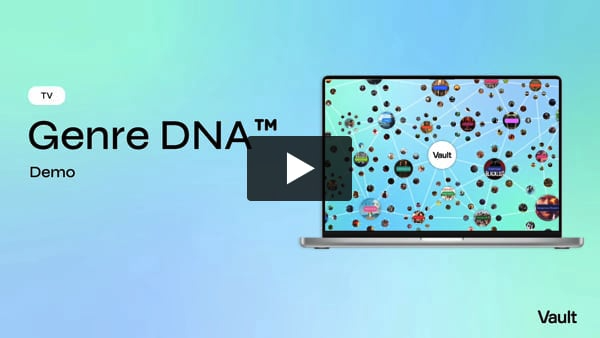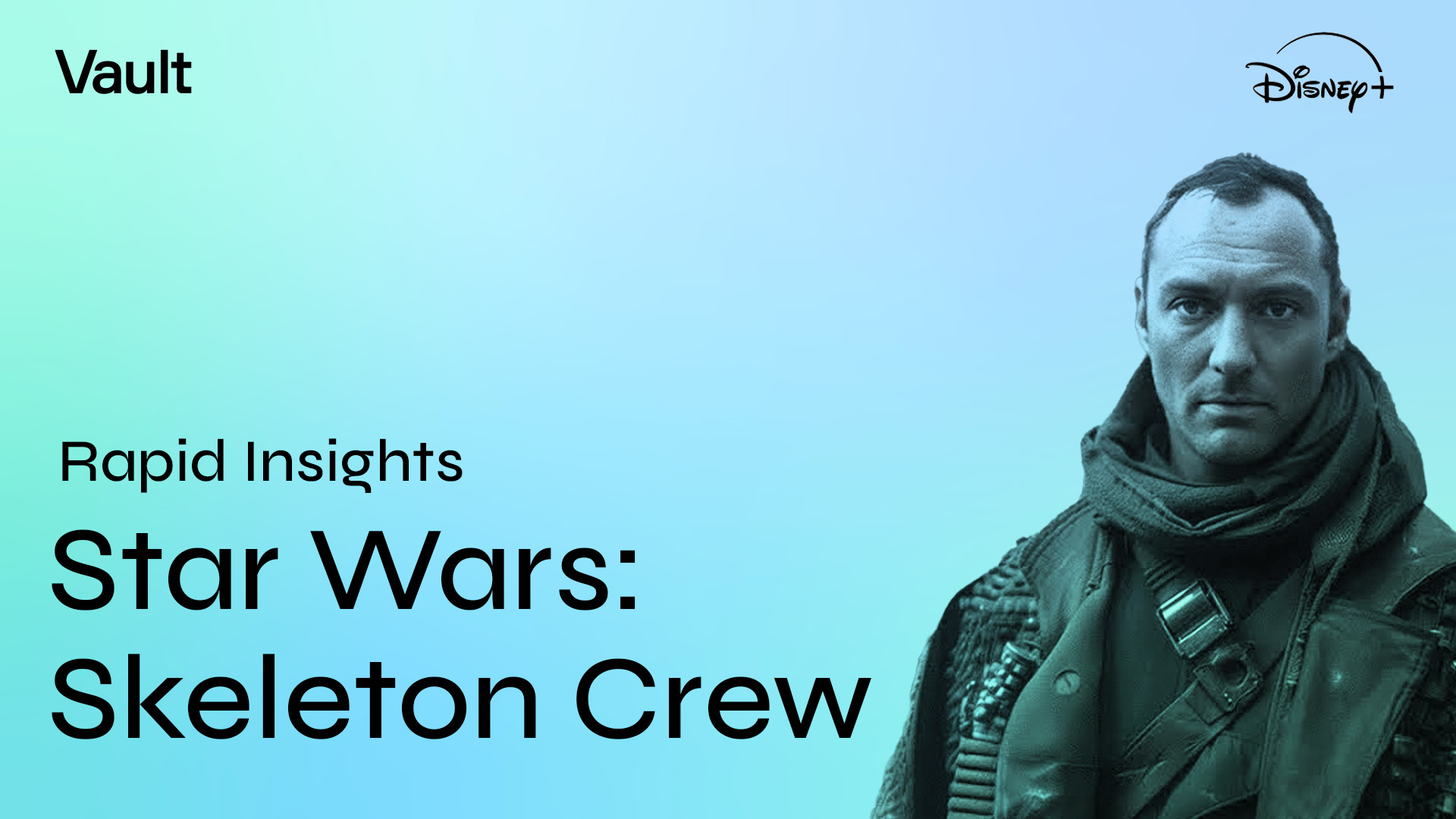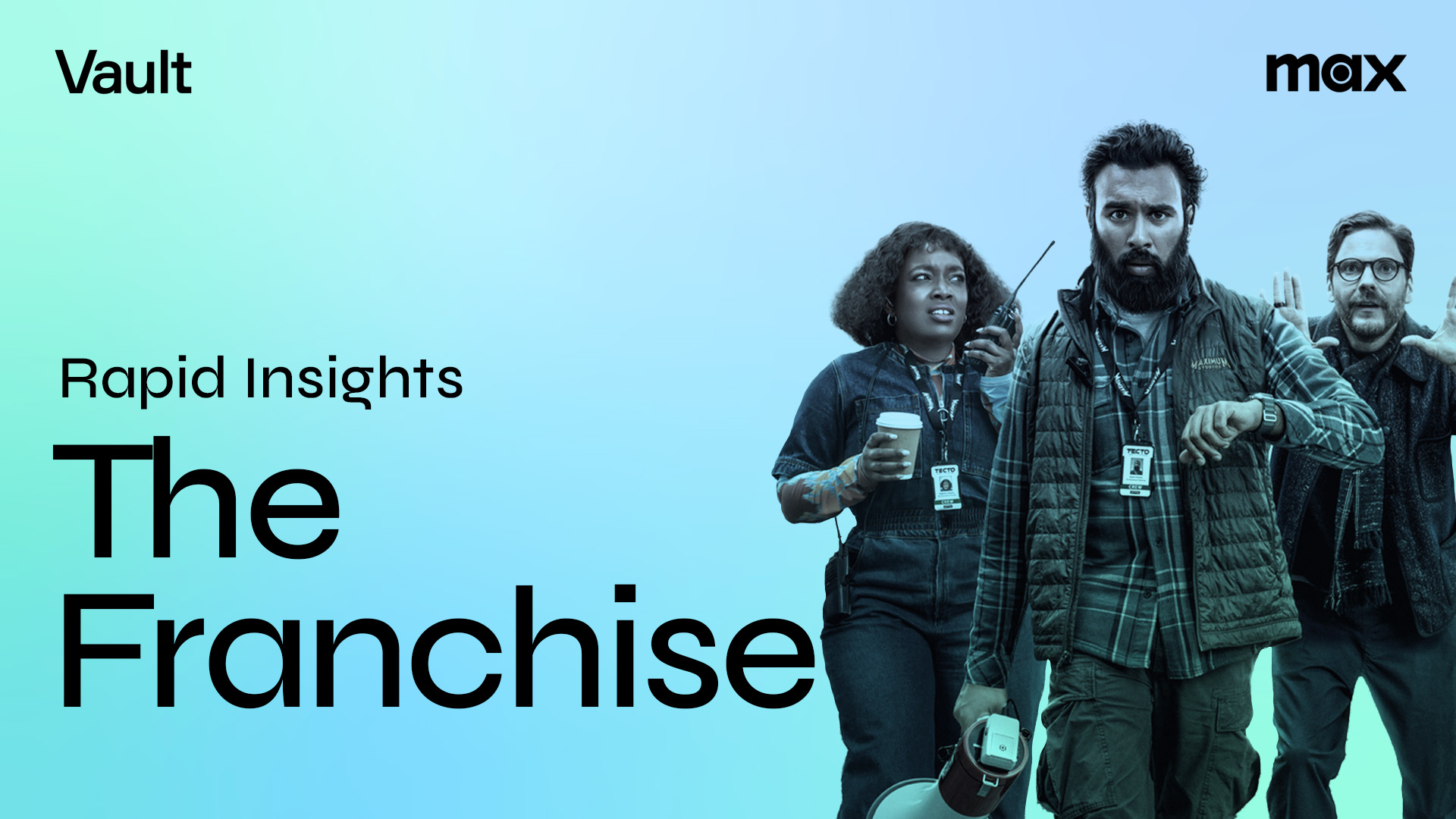Premiering today on Hulu is a buzzy new action-comedy that offers up a clever meta-commentary on TV representation and whose stories typically get told. Based on a critically-acclaimed novel of the same name, the show follows Willis Wu, a background extra who finally steps into the spotlight when he witnesses a crime in Chinatown and is asked by the police to investigate the neighborhood’s criminal underworld.
Here’s what you need to know about Interior Chinatown:
Vault uses index scores to describe the impact a given story/theme/element will have on specific KPIs:
≤79 Disappointing 80-89 Challenging 90-109 Average 110-119 Promising 120+ Outstanding
Who will be tuning in for this new action-comedy series?
We’re predicting a viewership that’s mostly men (66%) and heavily aged 30+ (70%). While both halves of its split genre tend to lean male, Interior Chinatown’s profile nevertheless skews a bit more toward men than similar action-comedies like Barry, Mr. and Mrs. Smith, Chuck, Ash vs. Evil Dead, Cobra Kai, and The Umbrella Academy–but notably less so than The Boys.
What’s Interior Chinatown’s biggest draw?
Its goofy best friend duo. As neurotic protagonist Willis attempts to infiltrate Chinatown’s criminal underworld, his delightfully irresponsible roommate Fatty tags along for the ride (Male Friendship, 127), offering his unique brand of “support”–and much of the show’s zany humor. By leaning into elements of Buddy Comedy (148) and their Awkward Misadventures (123), the series ensures its top drivers for bingeability, ratings, and social buzz.
Why else will audiences want to watch?
For the excitement of the criminal element. As misfit Willis delves deeper into Chinatown’s secret underbelly (Fish Out of Water, 117), he starts attracting dangerous attention, putting his Life in Danger (125) and raising the stakes as bad guys emerge (Criminal Organization, 130) to take him down. Arrestingly slick yet tongue-in-cheek kung fu fights (Stylized Action & Violence, 121) will keep viewers on the edge of their seats.
What will make the protagonist compelling?
His burning desire. As an Asian-American actor, Willis has always been relegated to the background, cast aside in favor of other leads on his police procedural TV show. With this investigation, he’s finally seizing his chance to step into the spotlight and gain the Honor (117), Power (117), and Acceptance (117) he’s always sought. At the same time, his yearnings for Romance (117) with the beautiful cop who’s recruited him and Vengeance (120) against those who’ve wronged him will add depth to his story.
What else will make the series bingeworthy?
A Missing Loved One (141). Willis’s deep inquiries will link the Chinatown mafia to the unsolved disappearance of his beloved older brother some dozen years prior, suggesting that his brother may not have been quite who he seemed. Viewers will want to keep watching to discover what really happened and see if Willis and his sibling are ultimately reunited.
Most Popular Rapid Insights:
Redefine your understanding of TV subgenres
Introducing Genre DNA™ – TV subgenres redefined by groundbreaking AI analysis to reveal the true drivers of viewership.
See the insights that others can’t
Genre DNA™ goes beyond traditional TV genre classifications by analyzing over 1,000 scripted and unscripted series on both linear and SVOD platforms from the last 5 years.
Each Vault Genre DNA™ report offers a precise analysis of your chosen TV subgenre, uncovering its unique drivers of viewership.
*Publicly released trailers for series are evaluated using Vault’s algorithms – utilizing our proprietary 120K+ story element database alongside viewership performance and other datasets – to identify unique combinations of stories, themes, characters, and genre elements that will drive success.










